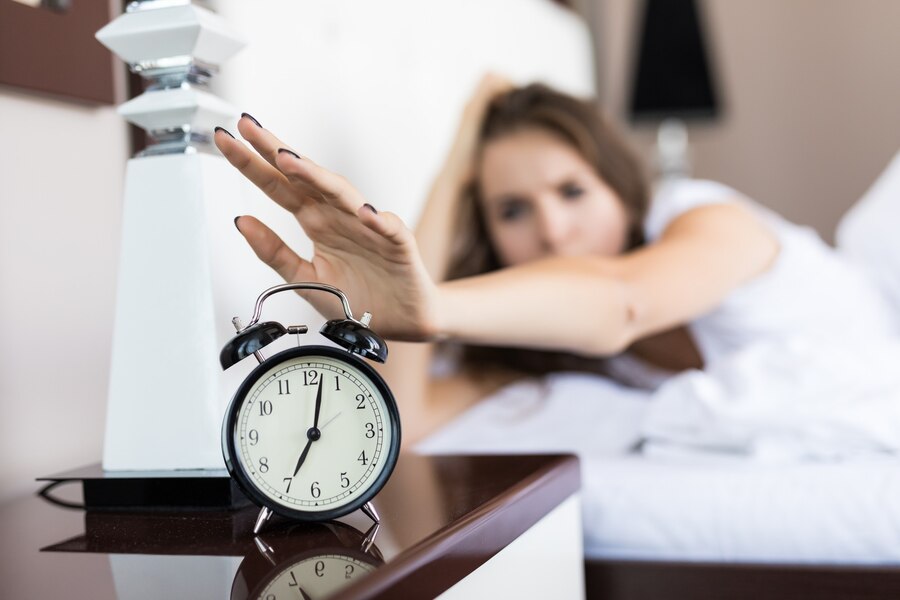Excessive sleepiness is a major symptom in many patients seen at sleep clinics. In addition, excessive sleepiness can be a presenting sign of other medical and psychiatric disorders.
Modafinil 200mg Tablet (trade name Provigil) is a wakefulness-promoting medication. It is used to treat narcolepsy, obstructive sleep apnea/hypopnea syndrome, and shift work sleep disorder.
Medications for Sleep Disorders
Medications are an important part of the treatment for many sleep disorders. There is no one-size-fits-all approach to treating sleep disorders; patients need to work with their healthcare providers to find the best combination of treatments for their condition and symptoms.
Sleep disorder medications are generally divided into two categories: hypnotics and sedatives, which induce sleepiness, and agents that promote or maintain wakefulness. The hypnotic and sedative medications work by increasing the activity of gamma-aminobutyric acid (GABA), which are neurotransmitters that serve as a means of communication between nerves. Increased activity of GABA causes the brain to produce drowsiness, and sedative medications decrease activities that prevent sleep.
Insomnia is the most common sleep disorder that leads people to visit their family physician, and it can cause problems with daytime functioning. Behavioral interventions should be used as the first line of treatment, but medications may be needed for some patients. Controlled-release melatonin is recommended as the first-line medication for older adults, and low-dose doxepin or the so-called “z” drugs are recommended for use when these fail.
It is important to inform a doctor of any medical or mental health conditions before starting any type of sleeping medication, including Modalert 200mg Tablet. Certain medications can interact with other medications and increase the risk of side effects. For example, taking Modalert with antidepressants may cause a dangerous reaction in some people.
Narcolepsy
The main symptoms of narcolepsy include extreme daytime sleepiness and sudden attacks of weakness or paralysis. Narcolepsy may also cause hallucinations, particularly when a person is falling asleep or waking up. These are called hypnagogic or hypnopompic hallucinations and can involve vivid dream-like experiences that feel real. These hallucinations can be accompanied by muscle paralysis or the feeling that a person is no longer in control of their body. Narcolepsy typically begins in the teenage years or early 20s.
The condition is caused by an abnormal lack of a neurotransmitter called hypocretin (hi-poe-KREE-tin), which controls being awake and when you enter REM sleep. The disease can be primary, meaning that it happens on its own, or secondary, which means that a tumor or head trauma causes it.
Treatment for narcolepsy typically includes medication and lifestyle changes. Maintaining a regular schedule of sleeping and waking up, even on weekends, helps improve alertness. Individuals should try to take short naps during the day and avoid eating large meals right before bedtime. Exercise, avoiding caffeine and tobacco, and losing weight can also help manage the disorder.
Modalert and sodium oxybate (Xyrem) are both effective medications for treating narcolepsy. These stimulants can have side effects, including gastrointestinal issues such as diarrhea and abdominal pain. Taking the drug with food can reduce some of these effects.
Obstructive Sleep Apnea
Obstructive sleep apnea happens when the muscles in your throat relax too much while you’re sleeping. This causes the airway to narrow or close, reducing the space for breathing. Obstructive sleep apnea can be very dangerous for people with this condition, especially when it becomes more severe over time.
When you have obstructive sleep apnea, you may not realize that it’s happening to you during the night. However, your sleep partner or family members might be able to tell because you may snore and gasp loudly as you breathe. You might also wake up several times during the night to find yourself struggling for breath. Obstructive sleep apnea causes fragmented and interrupted sleep, which can have many negative effects on your health over time.
People who have obstructive sleep apnea often experience fatigue and trouble concentrating during the day. This can lead to poor work and driving performance, and in some cases may even affect the safety of people who drive or operate machinery.
Obstructive sleep apnea is usually diagnosed with a physical exam and a review of your medical history. Your doctor might also ask about your lifestyle and bedtime habits. You may need a test called a sleep study to confirm the diagnosis. A sleep study involves spending a night in a lab to monitor your body’s responses to various conditions during sleep, such as obstructive sleep apnea.
Shift Work Sleep Disorder
Keeping your body’s circadian rhythms in sync with your sleep schedule can be challenging when you work non-traditional shifts. Firefighters, police officers, paramedics, factory workers, office cleaning staff, and doctors are all examples of people who must work outside of the traditional nine-to-five daytime work schedule. For these employees, a clash between their bodies’ natural sleep cycles and their work schedule can lead to insomnia and extreme sleepiness during their shifts.
Many of the same strategies for managing sleep problems that help with narcolepsy and obstructive sleep apnea can be applied to those who struggle with shift work disorder. For example, following a consistent schedule and taking regular naps can help, as well as avoiding caffeine in the hours leading up to your bedtime. Some patients also benefit from melatonin supplements or bright light therapy. However, sleep aids that make you more alert can have negative side effects, including a potential for addiction and dependence.
If lifestyle changes don’t improve your symptoms, you may need to seek professional medical treatment. A doctor will review your history, perform a physical exam, and use actigraphy to measure your sleep-wake cycle. They will determine if you have a shift work disorder and whether it is caused by other health conditions like narcolepsy or obstructive sleep apnea. They will then prescribe appropriate therapies and may recommend additional testing to rule out other conditions.
